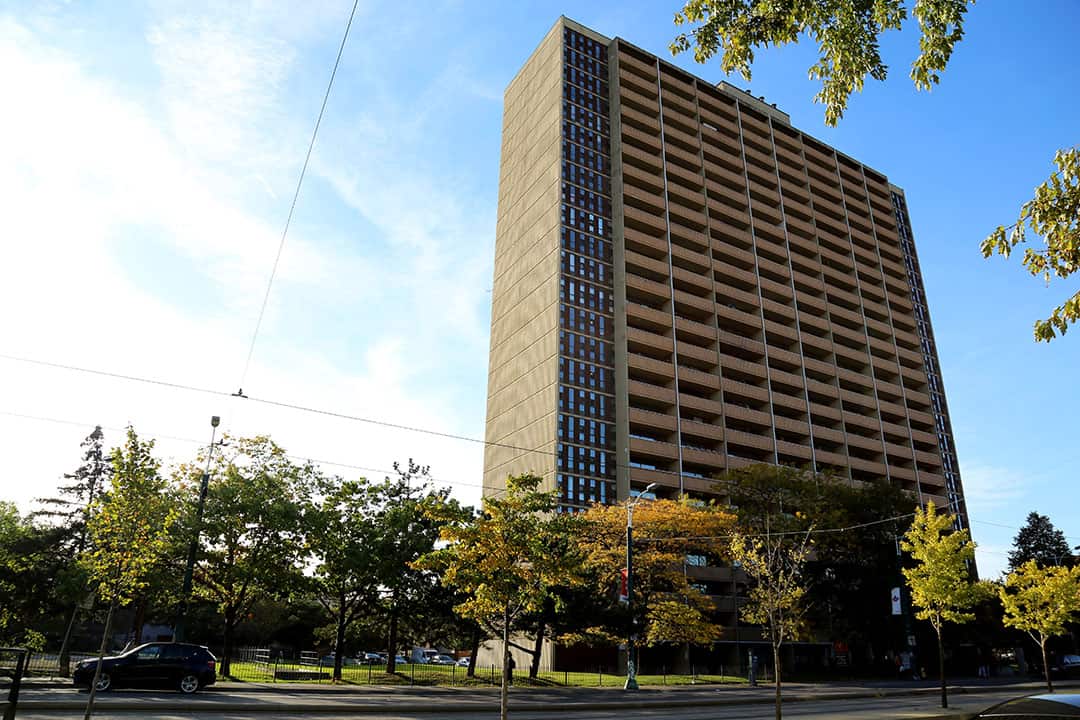The Toronto and East York Community Council amended the proposed development for 666 Spadina Avenue at a meeting on October 17 to recommend an investment into affordable housing and improving streetscapes in the area.
The proposal, submitted by Spadina Towers Inc. in July 2016, suggests adding an 11-storey, mixed-use infill building with 133 rental apartments and an on-site park. The lot, built in 1972 and listed as a heritage building, currently hosts a 25-storey apartment building with 334 rental units.
The report sent to the Toronto and East York Community Council states that the application underwent modifications to reflect the concerns of citizens and City Staff — the City of Toronto Official Plan requires residents of the area to be consulted before intensification of development. The modified proposal is meant to supply “a positive contribution to the neighbourhood through the addition of the new on-site park, POPs [Privately-Owned Publicly Accessible Spaces], and pedestrian circulation throughout the site.”
Sue Dexter, U of T Liaison for the Harbord Village Residents Association (HVRA), stated that the development proposal is “great for the community.”
The Harbord Village area — spanning from Bloor Street and Spadina to Bathurst Street and College Street — is a densely student-populated area, and the accessibility of more affordable housing close to campus is vital to them. Dexter said that the neighbourhood welcomes the large student population.
Dr. David Hulchanski, a professor of housing and community development with the Faculty of Social Work, with the Department of Geography and Urban Planning, commented, “Infill, residential land use intensification, is good, more rental [opportunities are] good.”
It is recommended that the owner of the lot be required to act pursuant to Section 37 of the Planning Act, which refers to height and density of developments, and reflect community benefits. The agreement would secure a cash contribution of $800,000 from the owner. Under the agreement of the Chief Planner and Executive Director, $400,000 would go toward creating affordable housing within Ward 20, Trinity-Spadina, and the other $400,000 toward improving local greenscapes, public realm, and neighbourhood greening improvements in the vicinity.
According to Dexter, the planning process of the development has been much more productive and collaborative than the university’s conflict with the city over the lot across the street, 698 Spadina. The university’s plan is for the 698 infill to be 23 storeys and have zero green space — which stands in contrast to the modest 11 proposed storeys and the ample green space proposed for 666 Spadina, which would double the amount of park space in Harbord Village.
The HVRA believes that the development “creatively addresses the need for rental housing, for affordable housing and for community green space.”
The report cites the “Harbord Village Green Plan,” which is designed to preserve and maximize the green spaces in the Harbord Village area. The plan aims to target park improvements, street keeping, and other motives such as laneway greening.
When first proposed in July 2016, attendees in a community consultation were concerned about the site’s local green space and impact on the heritage site.
The amended proposal will be presented to the Toronto City Council on November 7, 2017.


